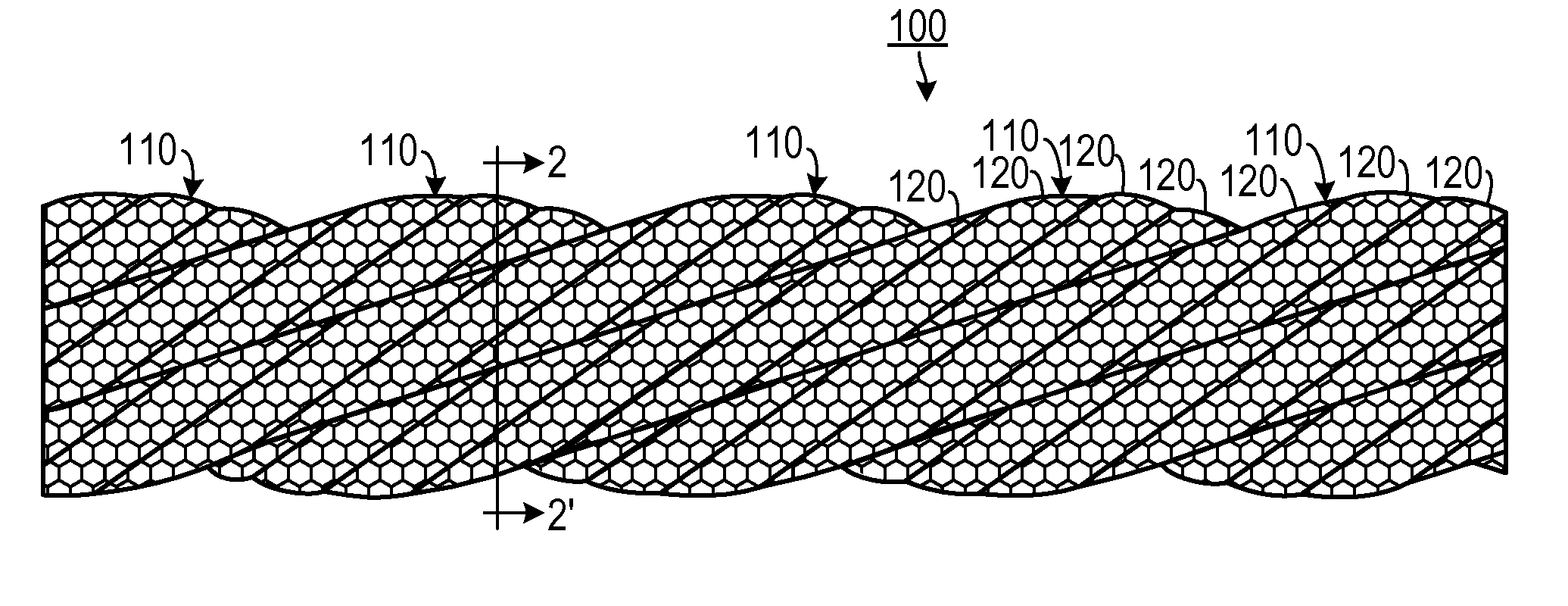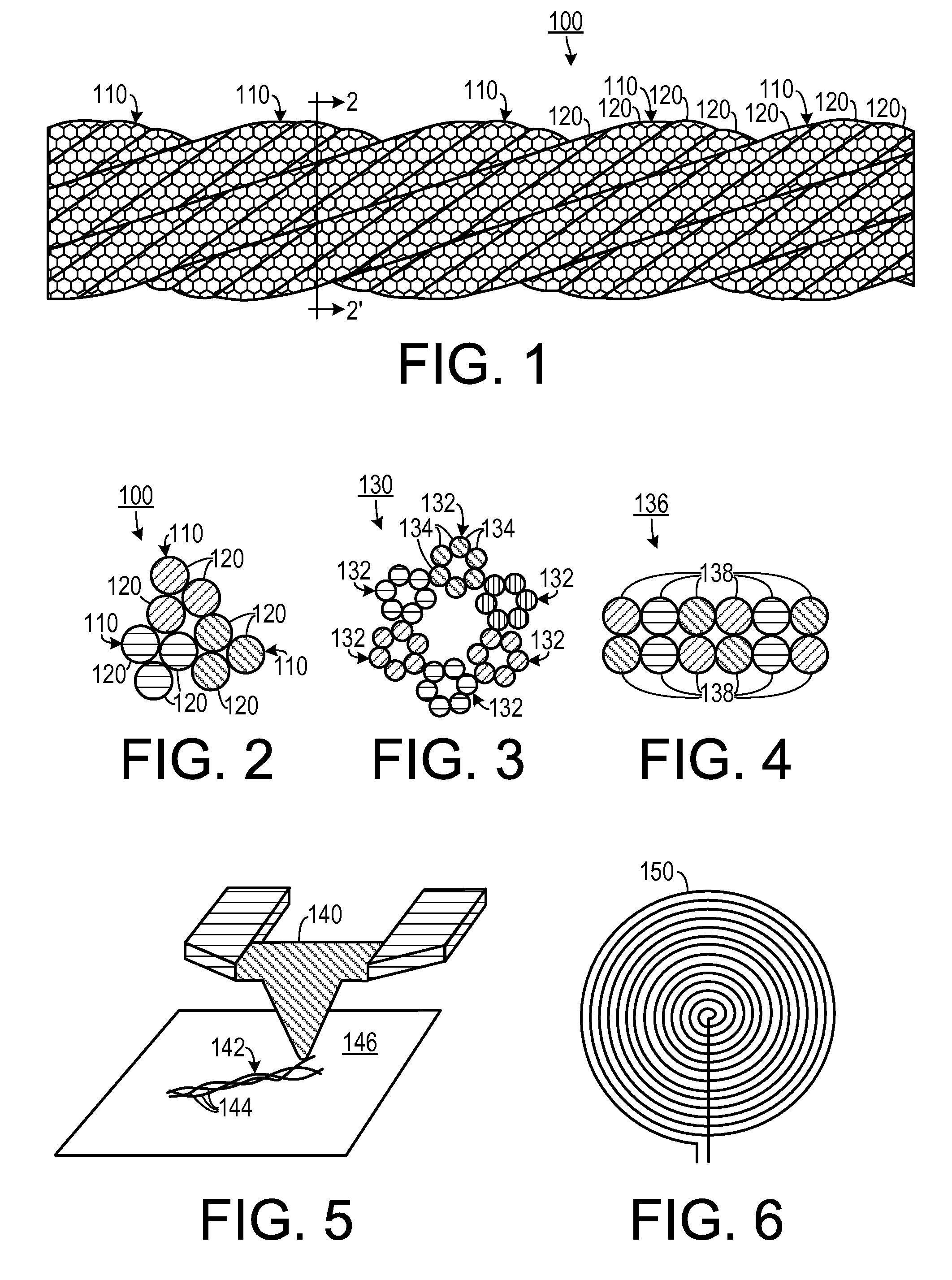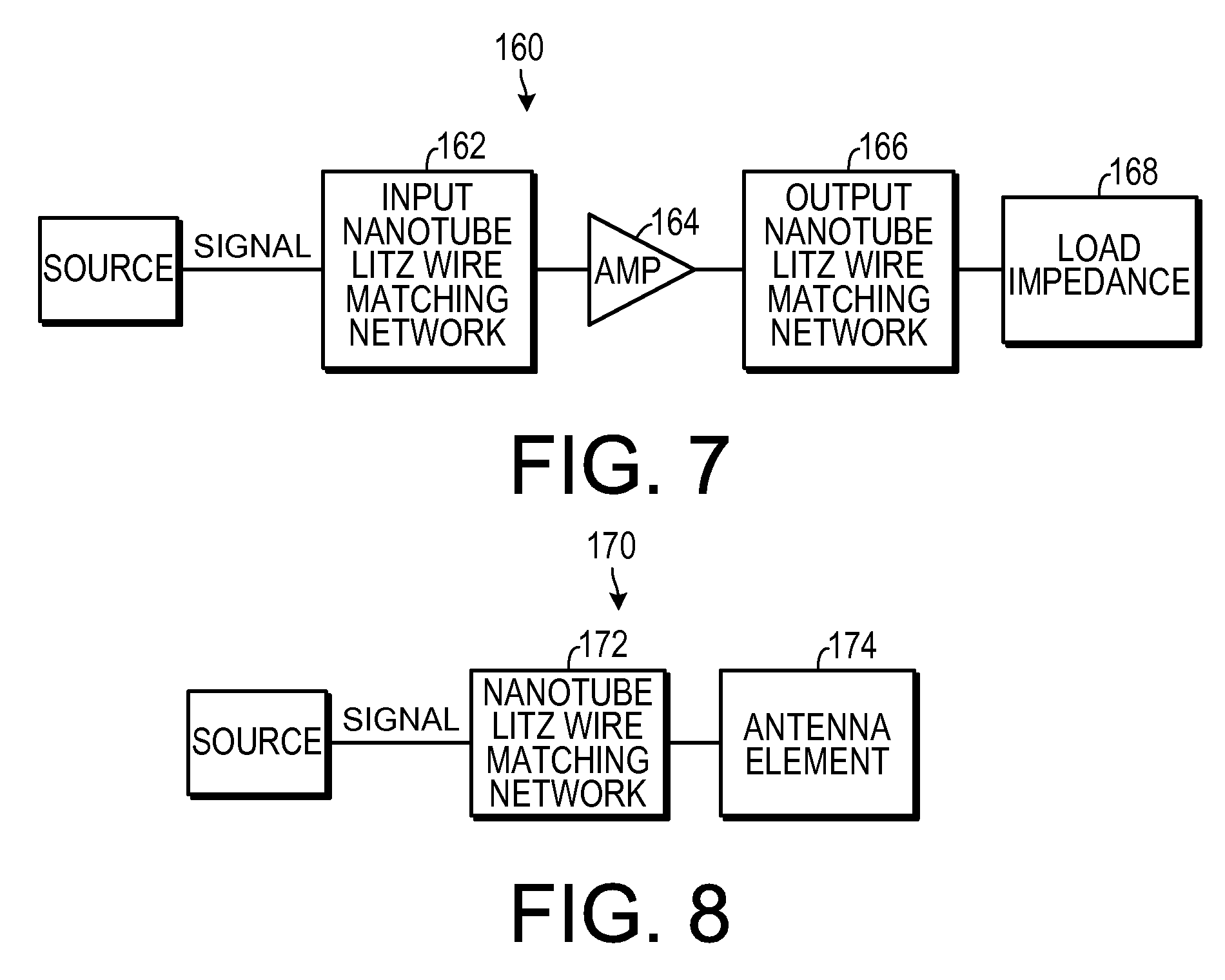Carbon nanotube litz wire for low loss inductors and resonators
a carbon nanotube and low-loss technology, applied in the field of nano-scale conductor litz wire, can solve the problems of significant power loss, increase in conductor losses due to skin effect, and significant overall power loss
- Summary
- Abstract
- Description
- Claims
- Application Information
AI Technical Summary
Problems solved by technology
Method used
Image
Examples
Embodiment Construction
[0032]A preferred embodiment of the invention is now described in detail. Referring to the drawings, like numbers indicate like parts throughout the views. As used in the description herein and throughout the claims, the following terms take the meanings explicitly associated herein, unless the context clearly dictates otherwise: the meaning of “a,”“an,” and “the” includes plural reference, the meaning of “in” includes “in” and “on.”
[0033]Also, as used herein “upper frequency range” includes frequencies in the UHF and SHF ranges. Generally, a frequency above 300 MHz (such as a frequency in the range of from 800 MHz to 10 GHz) would be included in an upper frequency range.
[0034]As shown in FIGS. 1 and 2, one embodiment includes a Litz wire 100 that is woven from a plurality of nano-scale conductors 120. The nano-scale conductors 120 could be nanotubes (such as carbon nanotubes) or could be other types of nano-scale conductors, including nano-ribbons, nano-rods and nano-wires, or a co...
PUM
| Property | Measurement | Unit |
|---|---|---|
| Frequency | aaaaa | aaaaa |
| Electric impedance | aaaaa | aaaaa |
Abstract
Description
Claims
Application Information
 Login to View More
Login to View More - R&D
- Intellectual Property
- Life Sciences
- Materials
- Tech Scout
- Unparalleled Data Quality
- Higher Quality Content
- 60% Fewer Hallucinations
Browse by: Latest US Patents, China's latest patents, Technical Efficacy Thesaurus, Application Domain, Technology Topic, Popular Technical Reports.
© 2025 PatSnap. All rights reserved.Legal|Privacy policy|Modern Slavery Act Transparency Statement|Sitemap|About US| Contact US: help@patsnap.com



